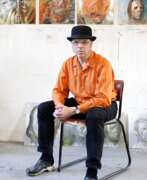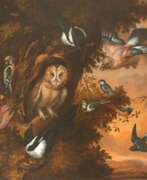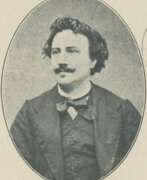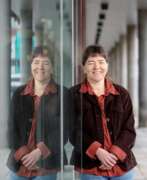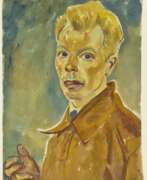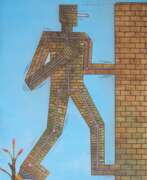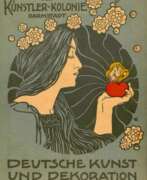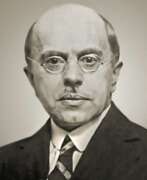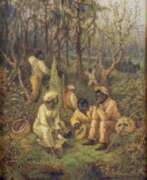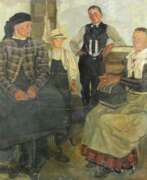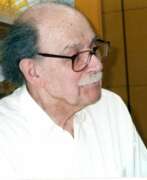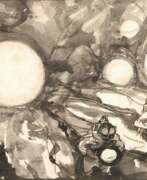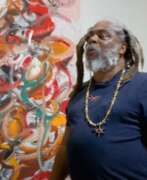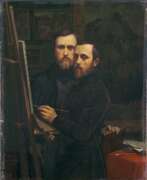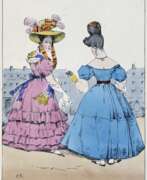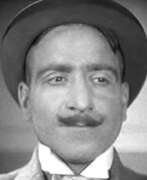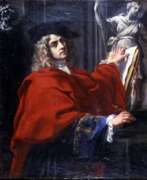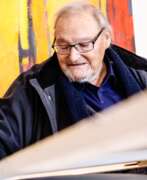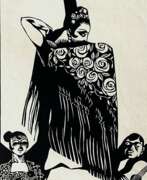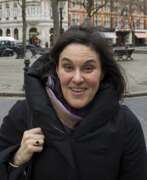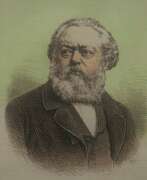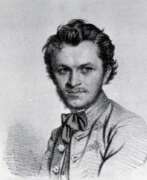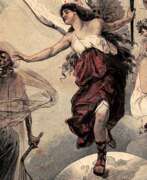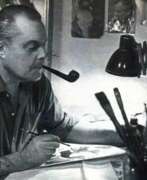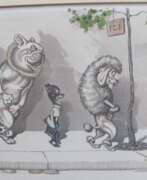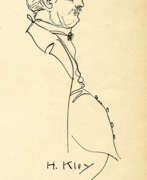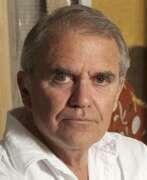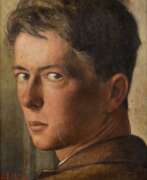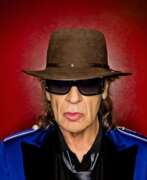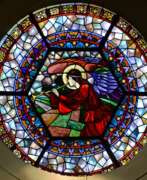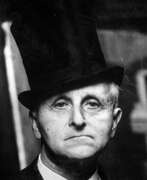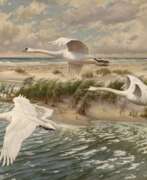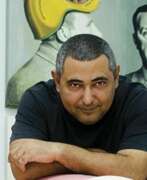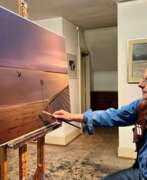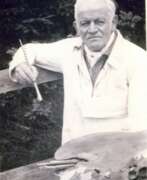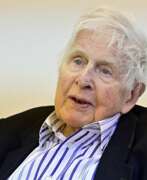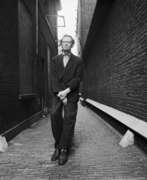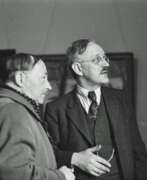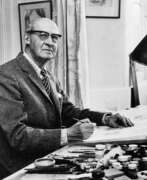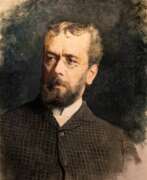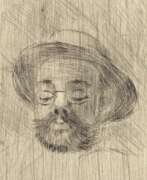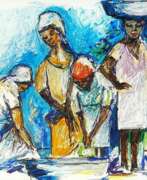Painters Caricature
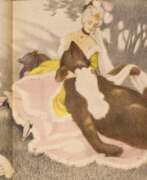

Moritz Bauernfeind was an Austrian painter, graphic artist, illustrator and cartoonist.
Moritz studied at the Academies of Fine Arts in Vienna and Munich, then at the Académie Julian in Paris, early landscapes painted in the style of Impressionism.
Bauernfeind gained fame in the early 20th century as an illustrator of political satire, notably in Meggendorfer's Humorous Notes and Der Flo. Between 1900 and 1905 he published more than 200 satirical drawings in Der Scherer and Simplicissimus, and in 1909 a series in the Illustrirten Zeitung in Leipzig. And color illustrations for fairy tales and legends were eagerly published by juvenile and many other publications. Bauernfeind's fantastic genre images with stylized figures and a touch of burlesque attract with their unusualness and mystery.
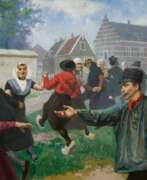

Johan Coenraad Braakensiek was a Dutch painter, illustrator and political cartoonist. For most of his career, Braakensiek worked for a number of publishers as an illustrator. However, he also found work as a political cartoonist for the magazines Geïllustreerd Politie-Nieuws, De Amsterdammer and De Groene Amsterdammer. His first work was with Geïllustreerd Politie-Nieuws where he contributed infrequently. His break and rise in popularity came in 1886 when he was made the political cartoonist for De Amsterdammer magazine. He also was affiliated with De Groene Amsterdammer magazine from 1925 to 1931. Braakensiek remains popular thanks to the books he worked on as illustrator. Books such as Van Allerlei Slag and Uit het leven van Dik Trom, which feature his art are widely known and read.
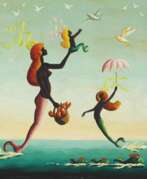

Orville Bulman is a self-taught American artist and former businessman. After working briefly as a cartoonist in Chicago and becoming president of two family-owned companies, he was inspired by the lives of the African-American people of Haiti and the Caribbean islands. Bulman created some 2,000 paintings depicting the flora and fauna of those places and scenes of people's lives.
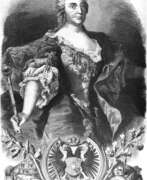

Georg Conrad Ludwig Burger was a German historical painter, illustrator, and medallist. He studied at the Berlin Art Academy, at the same time working at book illustrating; he was also a pupil of Thomas Couture in Paris. Among his best drawings are the illustrations for the works of La Fontaine and a collection of 20 plates known as Die Kanone. After 1869, he devoted himself to decorative painting, his most important work in this line being the walls and ceilings in the Berlin City Hall (1870) and the colossal figures symbolizing the warlike virtues at the School of Cadets at Lichterfelde (1878).
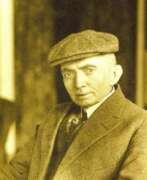

Cassius Marcellus Coolidge was an American artist, known primarily for his depictions of anthropomorphic dogs playing poker.
Cassius Marcellus Coolidge often signed his works as Cash Coolidge (for more comic effect).
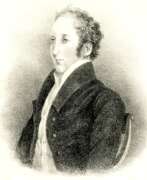

Charles D'Oyly was a British public official and painter from Dacca (now Dhaka). He was a member of the Bengal Civil Service based in Calcutta, Dacca and Patna from 1797 to 1838. Although he held senior positions with the East India Company's civil service, he is best known as an amateur artist who published many books featuring engravings and lithographs featuring Indian subject matter.
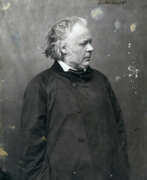

Honoré Daumier, a French artist, is renowned for his profound impact on 19th-century art through his work as a caricaturist, painter, and sculptor. His art, which satirized French politics and society, is celebrated for its insightful commentary on the human condition and the social landscape of his time. While Daumier is perhaps best known for his incisive and humorous lithographs that critiqued the French bourgeoisie and political figures, his contributions to painting and sculpture are equally significant, demonstrating a keen observation of everyday life and a masterful use of expression.
Honoré Daumier's early involvement with lithography, a relatively new printmaking technique at the time, allowed him to produce works that were both accessible and impactful, resonating with a wide audience. His imprisonment in 1832 for his caricature of King Louis Philippe as Gargantua highlights the daring nature of his work and the personal risks he took to express his political views. Despite the challenges he faced, including eventual blindness, Daumier continued to create art that spoke to the societal issues of his day, transitioning to painting and sculpture while maintaining the critical edge that defined his earlier works.
His later years were spent in Valmondois, where he focused more on painting, capturing scenes of daily life with a technique that distanced itself from the caricatural style he was famous for but retained his keen observational skills. Despite his struggles with poverty and illness, Honoré Daumier's legacy endures, with his works housed in prestigious institutions like the British Museum and being recognized for their contribution to the development of modern art, particularly in their influence on Impressionist techniques.
For collectors and enthusiasts of art and antiques, Honoré Daumier's work offers a unique window into 19th-century French society, marked by a blend of humor, social critique, and poignant observation. His diverse body of work, from lithographs to paintings, continues to inspire and provoke thought, making him a pivotal figure in the history of art.
To stay informed about the latest exhibitions, sales, and events related to Honoré Daumier's work, signing up for updates is a valuable way to ensure you don't miss out on the opportunity to engage with the rich legacy of this influential artist.
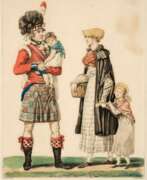

Philibert-Louis Debucourt was a French painter, caricaturist and engraver.
Debucourt was a specialist in color printing techniques and worked mainly with aquatint. He made engravings based on his own paintings as well as those of Charles Vernet, Louis-Leopold Boileau, and Nicolas-Toussaint Charlet.
Debucourt also competed in wit with British cartoonists who were active when revolutions were raging in Europe. Debucourt depicted people admiring each other in the gardens of the Palais Royale as Paris prepared for carnage. During the Napoleonic period, French political caricature was in its infancy, and Debucourt merely mocked French manners and morals by painting satirical portraits.


Adolf Dehn was an American artist known mainly as a lithographer. Throughout his artistic career, he participated in and helped define some important movements in American art, including regionalism, social realism, and caricature. A two-time recipient of the Guggenheim Fellowship, he was known for both his technical skills and his high-spirited, droll depictions of human foibles. In the 1930s, his work began to appear in magazines such as The New Yorker and Vogue. During his period as a lithographer, his striking images of New York, including Central Park, captured the essence of the Roaring 20s and the 1930s Depression. Beginning in 1930, Dehn executed a significant number of drawings and lithographs based on Midwest scenes. In the early 1930s, Dehn established The Adolf Dehn Print Club and became a founding member of the Associated American Artists. Dehn started executing watercolors in late 1936. Watercolor painting and casein painting represented signature second and third arms of Dehn's artistic output for the rest of his career. He is remembered as a prolific artist of great range. His works are held in over 100 museums. Dehn had a distinct style of illustration and painting. His drawings exhibit freedom in line and form along with social satire. Dehn's landscapes suggest the grandeur of nature, and a signature element in them for which Dehn was praised was the magnificence of his clouds.
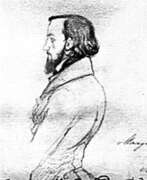

Emmanuil Alexandrovich Dmitriev-Mamonov (Russian: Эммануи́л Алекса́ндрович Дми́триев-Мамо́нов) was a Russian artist of the mid-19th century. He is known as a painter, graphic artist, portraitist, book designer, caricaturist and art historian.
Emmanuil Dmitriev-Mamonov became famous for his picturesque and graphic portraits of cultural figures of his time, in particular the writer Nikolai Gogol. His works are still used as illustrative material thanks to their outward resemblance to the models. The master was the son of the famous battle-painter Alexander Ivanovich Dmitriev-Mamonov.
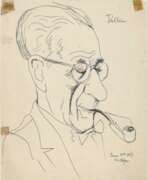

Benedikt Fred Dolbin, born Pollak, an Austrian press illustrator, studied at the Vienna University of Technology and worked for the construction company Waagner, Biro & Kurz during the First World War. He later moved to Berlin, where he worked as a press illustrator and book illustrator. Because of his Jewish origins, he was excluded from the Reich Press Chamber in 1933 and was banned from working in 1935. After emigrating to the USA, Dolbin continued his career His career as a draftsman continued, but he was unable to build on his earlier successes.
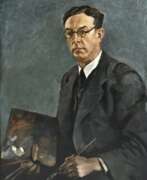

Paul Dom, born Paulus Ludovicus Carolus Dom, was a Belgian and Dutch painter and illustrator.
He studied at the Royal Academy of Fine Arts in Antwerp, lived in Belgium and the Netherlands, was granted Dutch citizenship in 1936 and lived in The Hague for the rest of his life.
Paul Dom was a versatile artist. He dabbled in drawing and painting and painted portraits, cityscapes and sketches, and genre scenes. At the same time he was a political cartoonist and illustrated books. Between 1917 and 1956 Dom illustrated hundreds of books, mostly for children.
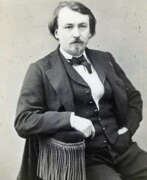

Gustave Doré, full name Paul Gustave Louis Christophe Doré, was a French painter, sculptor, graphic artist, illustrator, and cartoonist.
Doré was very industrious and prolific: he created more than 10,000 illustrations for art books as well as the Bible. He decorated the works of Rabelais, Balzac, Cervantes, Dante and Milton with his lively drawings, making Doré's name famous. He had a special gift for illustrating nature and fairy tales.
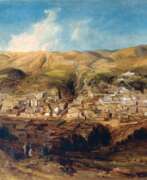

Daniel Thomas Egerton was a British landscape painter, draughtsman and printmaker.
Early in his artistic career, Egerton exhibited at the newly formed Society of British Artists, later to become the Royal Society of British Artists, and painted satirical illustrations on fashion.
In 1831 he traveled to Mexico, where he painted many landscapes, and in 1840 published a series of lithographs, Egerton's Views of Mexico, with accompanying texts. Egerton and gained fame for his depictions of Mexican culture and society - the series was very popular in Europe. However, his adventurous life ended in tragedy - Egerton was murdered in Mexico City.
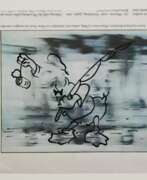

Manuel Eitner is a contemporary german artist. His first verified exhibition was Manuel Terra Eitner at Galerie Huber Goueffon in Munich in 1999, and the most recent exhibition was You Only Live Twice at Galerie Max Weber Six Friedrich in Munich in 2022. Manuel Eitner is most frequently exhibited in Germany, but also had exhibitions in Austria, Russia and elsewhere. Manuel Eitner’s art is in at least one museum collection, at Mercedes Benz Art Collection in Berlin.
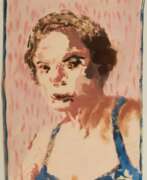

Simon English is a contemporary british artist. He is best known for his large and small-scale 'painted drawings' in which he mingles his distinctive imagery and words. He moves lightly between tight draftsmanship and a playfully sloppy application of colour and line. Language is paramount with diaristic musings interspersed with song lyrics, poetry and humorous one-liners. Self-described as 'automatic', his work has the spontaneity of stream-of-consciousness, exploring themes of love and loss, as well as gay and popular culture. Simon English lives and works in London. He emerged on the London Art scene in 1994 with an exhibition of paintings at the Saatchi Gallery as part of Young British Art III. Simon has exhibited internationally at numerous institutions.
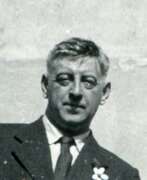

Pierre Falké, full name Pierre André Michel Falké, was a French painter and printmaker, illustrator and cartoonist.
Pierre Falké was a well-known humorist in the French press in the first half of the 20th century, collaborating with popular humor and satirical magazines. He drew comic strips and caricatures. In painting, Falké specialized mainly in marine views. He also illustrated more than sixty books and practiced wood engraving.
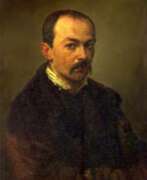

Pavel Andreyevich Fedotov (Russian: Павел Андреевич Федотов), a pioneering Russian realist painter, was born on July 4, 1815, in Moscow, Russia. He is celebrated as the founder of Russian genre painting and critical realism, capturing the essence of Russian society with sharp satire and insight. His works, including notable pieces like "The Major's Marriage Proposal" and "The Gamblers," reflect a keen observation of social conditions and human interactions, often infused with humor and moral critique.
Fedotov's artistic journey began in the military, where he served as an officer before fully dedicating himself to art. His transition from military life to art was marked by his attendance at the Imperial Academy of Arts in St. Petersburg. Initially working with pencil and watercolor, he later shifted to oils in 1846, a medium through which he achieved great success and recognition.
Tragically, Fedotov's life was cut short when he died in a mental clinic in 1852 at the age of 37, following a period of intense psychological distress. Despite his brief career, his legacy lives on, influencing future generations of Russian artists and continuing to captivate audiences with his vivid portrayals of 19th-century Russian life.
For those interested in exploring the profound depth and enduring impact of Fedotov's work, signing up for updates on exhibitions and auctions of his art could provide valuable insights and opportunities to engage with his masterpieces.
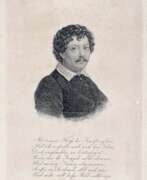

Friedrich Fleischmann was a German painter of the first third of the 19th century. He is known as a painter, graphic artist, printmaker and caricaturist.
Fleischmann studied engraving in Nuremberg and made a significant contribution to the local engraving school by introducing the technique of steel engraving. He produced some 1,900 works, including portraits of contemporaries and historical figures. Biographical sources state that the artist was banished from the city after a popular unrest caused by one of his caricatures and his house was destroyed by a mob.
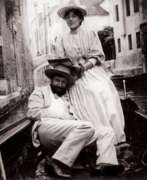

Jean-Louis Forain was a French painter, graphic artist and book illustrator.
Jean-Louis Forain began his career as a cartoonist. He worked for several Parisian magazines including Le Monde Parisien and Le rire satirique. Later studied at the École des Beaux-Arts with Jean-Baptiste Carpeaux and Jean-Léon Gérôme. He was friends with Paul Verlaine, Arthur Rimbaud, Claude Monet, Edouard Manet and Edgar Degas.
Jean-Louis Forain is best known for his keen observations on Parisian society, especially its social and political scenes. His subjects were often cabarets, theatres, cafés and the bustling streets of Paris. He depicted life of the working class, the bourgeoisie and the upper class with a satirical and critical eye.
Forain's artistic style was characterised by bold brushwork, strong use of line and a limited colour palette. His works often depicted scenes with dynamic movement, conveying the energy and atmosphere of the moment. His paintings were often theatrical in character, reflecting his interest in the world of entertainment.
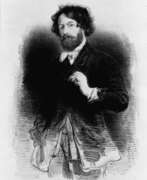

Paul Gavarni, real name Hippolyte Sulpice Guillaume Chevalier, was a French painter, cartoonist, illustrator, and a prominent 19th-century satirist.
Beginning his career as an assistant engineer, he showed signs of his future genius in the late 1820s as a fashion designer and illustrator. His talent for caricature and satirical art, however, led him to the editorship of Les Gens du Monde in 1835. Paul Gavarni, one of the smartest caricaturists, had no equal in drawing, capturing the follies and foibles of his time. He developed close friendships with many other leading artists and contemporary writers, including Honoré Balzac, Charles Dickens and William Maykpis Thackeray. His work was collected by Queen Victoria, as well as by Edgar Degas and Vincent van Gogh.
Gavarnie's long association with the popular magazine Le Charivari, with which Dumier and other cartoonists of the time also collaborated, was the pinnacle of his career. Working continuously from 1838 to 1844, he produced more than 900 engravings illustrating secular Parisian life with great wit, charm, and satire. He also illustrated the novels of Balzac and Eugène Sue and the short stories of Hoffmann. In addition to satirical works, Gavarni also distinguished himself in portraiture and sketches.
But it was not only in social circles that Gavarni revolved, where he was admired. In 1847 he spent a year in London, painting the inhabitants of the poor quarters around Whitechapel and producing some of his best work there.
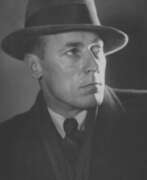

Jazep Mikhailovich Gorid (Russian: Язеп Михайлович Горид) was a Belarusian and Polish-Lithuanian artist of the first half of the twentieth century. He is known as a graphic artist and painter, caricaturist and illustrator.
Jazep Gorid drew political and everyday caricatures, painted portraits and landscapes. He also worked in book graphics, illustrated and designed books and other printed publications. In addition, the artist created stained-glass windows and murals.
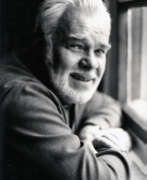

Vitaly Nikolaevich Goryaev (Russian: Виталий Николаевич Горяев) was a celebrated Soviet graphic artist, illustrator, painter, and caricaturist, born on April 14, 1910, in Tobolsk province, and passed away on April 12, 1982, in Moscow. He embarked on his artistic journey after his family moved to Chita in 1921, where he first published his drawings in the local newspaper. Goryaev's notable achievements include first-degree diplomas at the All-Union Contests "Best Books" for his illustrations to "The Adventures of Huckleberry Finn" and Gogol's "Petersburg Stories". His work was also internationally recognized, evidenced by a diploma II degree at the International Book Exhibition in Bratislava in 1967 for "Petersburg Stories", and in 1969, he was awarded the Gold Medal of the Czechoslovak Union of International Relations. Goryaev's illustrations spanned works by Russian classics like Pushkin, Gogol, and Dostoevsky, contributing significantly to the visual representation of these literary giants' works.
A laureate of the State Prize of the USSR (1967) for his contributions to illustrating Gogol's "Petersburg Stories", Goryaev was honored with the title of People's Artist of the RSFSR in 1976, and later, People's Artist of the USSR in 1981, marking his significant contributions to Soviet art. His legacy includes a profound impact on the illustration of literature, with his works being housed in prestigious collections such as the State Tretyakov Gallery, the Russian Museum, and the Pushkin Museum of Alexander Pushkin.
Goryaev's style was known for its expressive detail and ability to capture the essence of the literary works he illustrated, making his art an integral part of Soviet visual culture. His son, Sergei Vitalevich Goryaev, continues the artistic lineage as an artist, preserving the family's contribution to Russian art.
For collectors and experts in art and antiques, Goryaev's works represent a unique intersection of Soviet history, literature, and visual arts, offering a glimpse into the rich cultural tapestry of the era. His illustrations are not only important for their artistic value but also for their historical significance, embodying the spirit and challenges of Soviet society.
To stay updated on events, sales, and auctions related to Vitaly Nikolaevich Goryaev's work, sign up for updates. This subscription ensures you remain informed about opportunities to acquire pieces of this influential artist's legacy, highlighting moments when his works become available in the market.
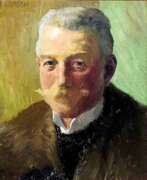

Richard Graef was a German painter, graphic artist, illustrator and cartoonist.
Graef studied painting at Hans von Hayek's school in Dachau, and then went to Paris for further studies, and afterwards opened his own studio in Dachau with his wife. Graef achieved fame as an illustrator and cartoonist, whose subjects - human vices and weaknesses, the relationship of the rich and poor and so on. He is one of the most famous and prolific cartoonists of the satirical weekly Simplicissimus and one of the oldest members of the Dachau artist colony at the time.
Graef also mastered wood engraving, but over time turned increasingly to watercolor and oil painting, creating still lifes and portraits as well as landscape paintings.
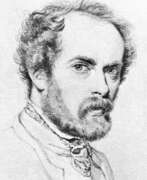

Jean Ignace Isidore Grandville, real name Gerard, was a French painter of the second third of the 19th century. He is known as a draughtsman-illustrator and caricaturist.
Grandville-Gerard came from a family of artists and actors, a stage name he adopted for himself. His humor and rich imagination made him one of the leading caricaturists of his time. Depicting contemporary mores, he endowed animals and plants with human vices and people with the appearance of animals.
Grandville illustrated many classic literary works, including La Fontaine's Fables, Robinson Crusoe, Don Quixote, and Gulliver's Travels, becoming famous for his unique and vividly creative interpretations.
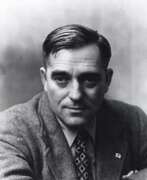

William Gropper was an American cartoonist, lithographer, and graphic artist who studied under Robert Henry and George Bellows. As a socialist, he spent his life creating satirical images about greed and exploitation, war, and prejudice. The artist visited the USSR in the 1920s, and the main subjects of his work in the 1930s were the international labor movement and anti-fascist cartoons. He collaborated with many Communist-oriented American publications. Glopper is known not only for his caricatures, but also for his book illustrations, posters, monumental and easel paintings.
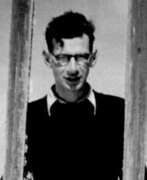

Rudolf Grossmann (German: Rudolf Grossmann, or Großmann), full name Rudolf Wilhelm Walther Grossmann, was a German painter, draftsman, illustrator and graphic artist.
Born into an artistic family, Grossmann began his education in painting and printmaking at the Düsseldorf Academy before continuing his studies in Paris with Lucien Simon and Pouleroz. Among his best-known works are various portrait drawings of celebrities, notably those published in the satirical periodical Simplicissimus; he was also known for his book illustrations. Grossmann began publishing his prints in 1905, and many major publishers in Germany and France commissioned his work. He later concentrated on figurative works and urban scenes, which showed the influence of Cézanne and Pasquin.
From 1928 until Hitler's Nazi Party came to power, Grossmann taught at the Berlin Royal School of Art and was a member of the Berlin Secession and the Deutsche Kunstlerbund. In 1934, his work, like that of many of his colleagues, was stigmatized as degenerate and confiscated by the Nazi government, and he was disbarred from practicing his profession. He soon left for Freiberg im Beisgau, where he died on November 28, 1941.
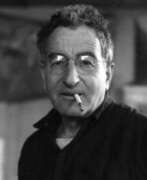

Willy Leopold Guggenheim, known as Varlin, was a Swiss painter. His figurative work emphasized the fragility of everyday life.
Varlin was friends with Hugo Loetscher and Friedrich Dürrenmatt, and painted them.
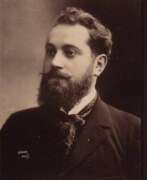

Albert Guillaume was a French artist, cartoonist, illustrator, and master of the poster.
Guillaume was a prolific illustrator: he worked for magazines, books, and almanacs, and his satirical drawings were published in Parisian humor magazines. He was also a painter and designer of theater posters and advertising posters. Working for the large Parisian printing company Camis, he designed a series of highly successful posters for commercial goods.
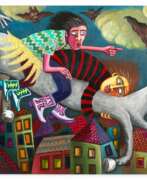

Oska Gutheil is a German painter. Oska Gutheil is regarded as a new star in the art world: galleries in metropolises such as New York, Berlin and Vienna are vying for the artist's pictures, who combine naïve painting with punk and comic elements. Oska Gutheil creates colourful, crazy worlds full of hybrid creatures – and with it his own biography.
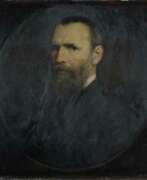

Edmund Harburger was a German artist of the last third of the nineteenth and early twentieth centuries. He is known as a painter, graphic artist, illustrator, and caricaturist.
Harburger became famous for more than 1,500 humorous drawings for the magazine Fliegende Blätter. He also created book illustrations and political cartoons. After living for two years in Venice, the artist practiced there copying the works of the old masters. His exhibitions were held in various European cities, including Paris, Berlin and Munich. His works are kept in museums in various countries, including the New Pinakothek in Munich and museums in Gdansk, Leipzig, Prague and other cities.
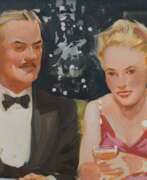

Kurt Heiligenstaedt, born on 13 August 1890 in Roßleben, Germany, was a distinguished artist known for his contributions as a poster designer, commercial graphic artist, and caricaturist. He is particularly recognized for his work with the German magazine "Simplicissimus," where he regularly contributed his drawings starting from 1923/1924 and then more consistently from 1935 onwards. In total, "Simplicissimus" published 428 of his drawings, highlighting his prolific output and significant role in the magazine.
Heiligenstaedt specialized in naturalistic yet elegantly drawn erotic scenes in contemporary costumes, which were among the first Pin-up images in Germany. His work for the successor magazine to "Simplicissimus" in 1959 was notable for causing a rare seizure action at the time due to the depiction of suggested nipples on a cover image.
He passed away in 1964 at the age of 73 in Berlin and was buried at the Waldfriedhof Zehlendorf, although his grave is no longer preserved. Heiligenstaedt's artistic style and his contributions to graphic design and caricature make him a notable figure in the history of German art.
Kurt Heiligenstaedt's work remains relevant for collectors, auctioneers, and experts in art and antiques, reflecting a unique blend of commercial artistry and illustrative skill. His legacy continues to inspire contemporary artists and designers.
For those interested in staying updated on events and sales related to Kurt Heiligenstaedt’s works, signing up for relevant newsletters and updates would be beneficial. This ensures staying informed about new discoveries and opportunities related to his art.
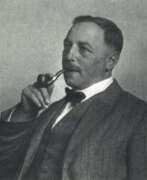

Thomas Theodor Heine was a German-Swedish artist of late nineteenth and early twentieth centuries of Jewish origin. He is known as a painter, draftsman, illustrator and writer.
Heine co-founded the popular German satirical weekly Simplicissimus, where he printed his drawings and caricatures. He also collaborated with the magazines Flying Pages and Youth, illustrated books, and created advertising posters and erotic drawings. After the Nazis came to power, the artist fled to Sweden, where he obtained citizenship. His works were presented at a retrospective anniversary exhibition in Stockholm in 1947, a year before Heine's death.
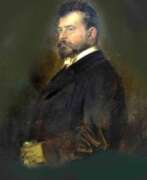

Adolf Hengeler was a German artist and illustrator, renowned for his distinctive style that beautifully merged humor with meticulous detail. Born on February 11, 1863, in Kempten, Allgäu, Hengeler's journey in the arts led him to Munich, where he left an indelible mark on the art and culture of the era.
Hengeler's body of work is diverse, encompassing applied graphics, caricatures, and picture stories. His graphic work, ranging from airy color drawings to precise ink strokes, has often been compared to Wilhelm Busch for its unique charm and precision. Notably, Hengeler regularly contributed to the "Fliegende Blätter" and created popular publications like the "Münchner Kinderfibel" and the "Kriegstagebuch 1914/15".
In painting, Hengeler focused on landscapes, often featuring cherubs and mythical creatures, and idyllic scenes of people in landscapes. His paintings are characterized by earthy brown tones, highlighted by bright local and pastel tones in flesh, clothing, or flowers, capturing the beauty of nature in Oberbayern and Allgäu. In his later years, Hengeler turned to Christian legends and biblical figures, adding a spiritual dimension to his natural scenes.
Hengeler's legacy is preserved in the Museum der Stadt Kempten, as per the bequest of his grandson, the art historian Peter von Bomhard. The museum houses Hengeler's personal and artistic belongings, including furniture and portraits, in a dedicated Hengeler Room.
For collectors, auctioneers, and experts in art and antiques, Adolf Hengeler's work offers a unique window into the culture and art of his time. His contributions to the German art scene, especially through his distinctive style and thematic diversity, make his works highly valued and sought after.
For those interested in staying updated on new product sales and auction events related to Adolf Hengeler's works, we invite you to sign up for our updates. This subscription is tailored specifically to keep you informed about relevant events and opportunities in the world of Adolf Hengeler's art.
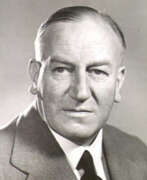

Harold Brocklebank Herbert was an early 20th century Australian painter and printmaker, an illustrator and cartoonist. A traditionalist, as an art teacher he promoted representational painting, and as a critic was an influential detractor of modernism. He was the first war artist to be appointed for Australia in the Second World War, serving for 6 months with the Australian Infantry Forces in Egypt in 1941 and in the Middle East in 1942. Herbert continued the Australian impressionist style and exercised particular skill with watercolour washes and his etchings, lithographs and cartoons are in an economical, sketchy style.
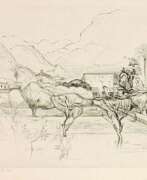

Friedrich Leonhard Heubner was a German commercial artist, painter, draftsman and illustrator. In 1914 he was a founding member of the artist group The Six. In 1916 he was represented in the Ernst Arnold Gallery at the "Second Exhibition of Dresden Artists Who Are in Army Service". From 1920 he was a member of the Munich Secession and regularly exhibited there. Heubner quickly freed himself from Munich Art Nouveau and developed his own sweeping style of drawing. There were caricatures for the youth, the gazebo and the Simplicissimus. Heubner first appeared as a poster designer. In the 1920s he turned more to book illustration and created etchings and lithographs. In his paintings of the 1920s, which he created primarily while traveling, he came to an expressive view of the landscape. His drawings, which show the destroyed Munich and its reconstruction from 1945 onwards, are of cultural-historical importance, many of which are now in the collection of the Munich City Museum.
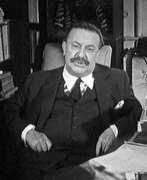

Adolf Hoffmeister (1902-1973) was a Czech artist, writer, journalist, playwright, translator, and diplomat, renowned for his multifaceted contributions to culture and art. His early career saw him collaborate with significant figures in the art world, including Philippe Soupault and Jaroslav Ježek. In 1928, Hoffmeister made his mark with a solo exhibition in Paris and became involved in various literary and artistic publications, such as Lidové noviny and Literární noviny.
Hoffmeister's art often intersected with his political views. He set up the anti-fascist magazine Simplicus in the 1930s and was a member of the Mánes Association of Fine Arts, where he defended the anti-Nazi artwork of John Heartfield. His life was dramatically affected by World War II; fleeing Nazism, he was interned in Paris and a Moroccan concentration camp before reaching New York in 1941. After the war, he returned to Prague and engaged in diplomacy and academia but faced political ostracization following his pro-reform activities in 1968.
Hoffmeister's work in collage was notable, especially his illustrations for Jules Verne's "Around the World in Eighty Days." He was also known for his libretto for the children's opera "Brundibar" and translating James Joyce’s "Anna Livia Plurabelle." His pieces, such as "Demonstration" (1963) and "Greek village by Syrakus" (1960), are preserved in archives like the Ruth and Marvin Sackner Archive of Concrete and Visual Poetry, illustrating his unique approach to visual storytelling.
For collectors, auctioneers, and art and antiques experts, Hoffmeister's works represent a compelling blend of artistic innovation and historical context. His legacy continues to inspire, and keeping informed about exhibitions or sales of his work is essential for those interested in 20th-century European art and literature.
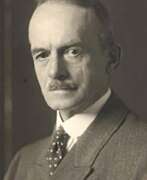

Angelo Jank was a German animal painter, illustrator and member of the Munich Secession. He was the son of the German painter Christian Jank and specialized in scenes with horses and riders. For many years, he was also employed as an illustrator for the magazines Jugend and Simplicissimus, And he was also an instructor at the Academy of Fine Arts. In addition to his canvases, he painted murals at the Justizpalast and scenes from history at the Reichstag building in Berlin. His work was also part of the painting event in the art competition at the 1936 Summer Olympics.
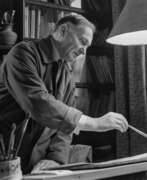

Aminadav Moiseyevich Kanevsky (Russian: Аминадав Моисеевич Каневский) was a Russian graphic artist and illustrator, celebrated for his satirical works and contributions to children's literature. Born into a large family in Elisavetgrad, Kherson province (now Kropyvnytskyi), Ukraine, in 1898, Kanevsky's early life was marked by poverty, prompting him to work from a young age in various capacities, including as a photographer's assistant and factory worker. His talent in art led him to Moscow's VKHUTEMAS, where under the guidance of Dmitry Moor, he honed his skills in cartooning and illustration, eventually becoming a prominent figure in Soviet satirical and children's publications.
Kanevsky's notable contributions include the creation of the iconic character Murzilka for children's literature, and his illustrations for "The Golden Key" by Alexei Tolstoy and "Moidodyr" by Korney Chukovsky. His work extended beyond books to satirical magazines and posters, where he depicted political themes and everyday Soviet life with humor and insight. During the Great Patriotic War, he produced anti-Nazi propaganda, showcasing his commitment to the Soviet cause through art.
Kanevsky's legacy is preserved in the State Tretyakov Gallery, the State Russian Museum, and other prestigious collections, affirming his enduring impact on Russian cultural and artistic heritage. His artworks, often executed in ink or watercolor, continue to attract collectors, with auction prices reflecting the significant interest in his oeuvre.
For enthusiasts and collectors of Aminadav Kanevsky's work, signing up for updates can provide valuable information on new sales and auction events related to his creations. This ensures that aficionados do not miss out on the opportunity to acquire pieces by this remarkable artist, whose work spans the humorous to the historically significant.
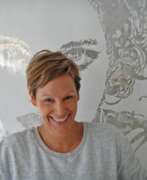

Muriel Köhler-Docmac, née Tamschick, alias Muche, is a German artist, designer and scenographer living and working in Stuttgart.
She studied at the Academy of Fine Arts in Munich and at the University of Design Karlsruhe, specializing in scenography, then at the Eberhardt-Ludwig Gymnasium in Stuttgart. Muriel Köhler-Dokcmac's background includes the design of commercial spaces and work in stage design, styling, artwork for various music videos and commercials at home and abroad. She also created the interior design of the Munich Theater Academy.
The artist works in a variety of techniques: she paints, spray paints, creates collages and glues materials onto surfaces. She uses perforated sheets, self-cut stencils or even a shower mat to apply her meshes. References to street art, graffiti and comics are also visible in her works, as well as elements of caricature, illustration and pop art. Muche has participated in numerous exhibitions at home and abroad with her paintings.
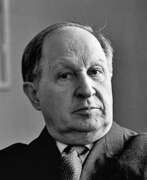

Porfiry Nikitich Krylov (Russian: Порфирий Никитич Крылов), a prominent Soviet artist, is celebrated for his extensive contributions as a painter, graphic artist, and cartoonist. Born on August 22, 1902, in Tula, Russia, Krylov emerged as a key figure in the "Kukryniksy" collective, which he formed with Mikhail Kupriyanov and Nikolai Sokolov. This group gained fame for their incisive political cartoons and evocative book illustrations that captured the spirit and challenges of their times. Beyond his collaborative work, Krylov's solo endeavors showcased his ability to delve into a range of subjects through portraits, landscapes, and still lifes, often brought to life through his plein air painting sessions. His artistry earned him several accolades, including the People's Artist of the USSR in 1958, numerous Stalin Prizes during the 1940s and 1950s, and the Lenin Prize in 1965. Krylov passed away on May 15, 1990, in Moscow, leaving behind a legacy that continues to resonate in prestigious collections such as the State Tretyakov Gallery and the State Russian Museum.
For collectors and experts in art and antiques, delving into Krylov's works presents a unique opportunity to explore the depths of Soviet artistic expression. His diverse body of work offers insights into the cultural and political dynamics of his time, making his pieces highly sought after in the art collection circuit.
To stay abreast of the latest sales and auction events featuring Porfiry Nikitich Krylov's works, enthusiasts and collectors are encouraged to sign up for updates. This ensures access to the opportunity to acquire pieces from the impressive oeuvre of this celebrated Soviet artist, enriching collections with works of significant historical and artistic value.
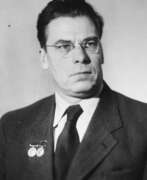

Mikhail Vasilyevich Kupriyanov (Russian: Михаил Васильевич Куприянов) was a Russian artist whose career spanned various facets of painting and graphic design, earning him a celebrated spot in the art world. Born in the early 20th century, his educational path led him from Tashkent Central Art Studios to VKhUTEMAS/VKhUTEIN in Moscow, where he honed his skills in graphic arts. Kupriyanov's artistry was not confined to a single genre; he adeptly moved between creating industrial landscapes, engaging in wartime propaganda work, and capturing serene European and Russian sceneries.
His early work, particularly in the 1920s and 1930s, showcases a profound affinity for the railway and its surrounding landscapes, depicted with remarkable precision and artistry in watercolor. These pieces uniquely blend technology with nature, showcasing dynamic compositions and an atmospheric quality that resonates with the viewer.
During World War II, Kupriyanov, along with his colleagues, ventured into the realm of anti-war propaganda, producing posters, caricatures, and leaflets that were instrumental in the Soviet Union's informational warfare. This period of his work highlights his ability to channel his artistic talent into powerful social commentary.
The post-war era saw a shift in Kupriyanov's focus to landscapes, where he captured the essence of Moscow and several European locales with a subtle and harmonious palette. These works, reminiscent of the French Barbizon school, are celebrated for their simplicity, emotional depth, and pictorial integrity, setting Kupriyanov apart as a master of landscape painting.
Kupriyanov's legacy is preserved through his numerous awards and the recognition he received, including being named a People's Artist of the USSR and a Hero of Socialist Labor. His works are featured in some of the most prestigious museums and private collections worldwide, demonstrating his enduring influence on the art world.
For collectors and art enthusiasts, Kupriyanov's oeuvre offers a compelling glimpse into the rich tapestry of Russian artistic heritage and its historical context. Engaging with his works offers not only aesthetic pleasure but also a deeper appreciation for the role of art in societal discourse. To remain informed about opportunities to acquire pieces by Kupriyanov or learn more about exhibitions featuring his work, signing up for updates is recommended. This ensures access to valuable information about sales and auction events related to this distinguished artist, enriching collections with pieces of significant historical and artistic merit.
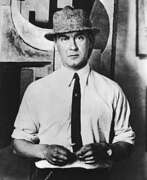

Vladimir Vasilyevich Lebedev (Russian: Влади́мир Васи́льевич Ле́бедев) was a Russian and Soviet artist of the twentieth century. His work goes far beyond a single style or genre. Lebedev became famous for his illustrations for children's books, satirical drawings and paintings.
Vladimir Lebedev is also famous for propaganda and political posters, which he had to create in a short time in the most difficult periods of Russian history - after the revolution of 1917 and during the Great Patriotic War. The artist had to meet the political demands, yet all of Lebedev's works turned out to be interesting and atmospheric.
Before and after the change of power in Russia, Lebedev was a member of several societies of artists - the Union of Youth, the Association of New Currents in Art, and the Four Arts. He was also the founder of the Leningrad school of book graphics.


Dongi Lee is widely known Korean pop artist who works with popular cartoon-like images. He has attempted to show the result of cultural mixtures that combines two disparate codes such as pop characters like AtoMouse and abstract painting, which reflects our current society in which communication and harmony became a difficult task.
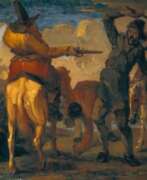

Francis Lepipre was an English painter of Flemish origin. Lepipre travelled extensively on the continent and his close study of the works of the great artists made him an excellent draughtsman.
Francis Lepipre painted landscapes, humorous compositions and caricatures, often carving subjects into silver plates for his friends, who used them as lids for tobacco boxes.
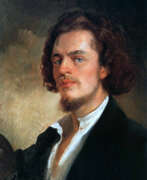

Konstantin Yegorovich Makovsky (Russian: Константин Егорович Маковский) was a renowned Russian painter, celebrated for his romantic and historical paintings that often portrayed an idealized view of Russian life in previous centuries. Born in Moscow in 1839, Makovsky became a pivotal figure in Russian art, distinguishing himself early on at the Moscow School of Painting, Sculpture and Architecture and later at the Imperial Academy of Arts in Saint Petersburg.
Makovsky was a core member of the "Peredvizhniki" or Wanderers, a group advocating for realism and social critique through art. His commitment to depicting the everyday life of old Russia won him accolades, including the Large Gold Medal at the World's Fair in Paris in 1889. Some of his notable works include "The Russian Bride's Attire" and "The Boyar Wedding Feast," which reflect his mastery in capturing the lavish and picturesque aspects of Russian history and culture.
Tragically, Makovsky's life ended in a road accident in Saint Petersburg in 1915, but his legacy lives on through his profound impact on Russian art and culture. His works continue to be highly regarded and are featured in major museums and collections worldwide.
For those interested in exploring Konstantin Makovsky's work further or acquiring pieces related to his artistic legacy, stay updated with our newsletters for announcements on sales and auction events. Sign up to not miss out on the opportunity to own a piece of Russian art history.
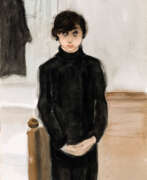

Jeanne Mammen was a twentieth-century German artist. She is known as a graphic artist and draftsman, a representative of modernism, a prominent figure in the artistic life of the Weimar Republic.
Jeanne Mammen developed an artistic style close to the New Materialism school. As she grew older, her work became more symbolic; after 1945, the artist moved towards abstractionism. She worked for fashion magazines, created movie posters, and illustrated erotic poetry. Mammen actively developed collage techniques, as well as creating portraits and caricatures, and sketching street types.
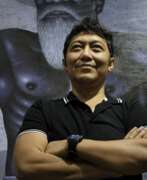

Nyoman Masriadi is a painter and a leading artist of the post-Suharto era in Indonesia. His works have gained a collectors base which includes prominent collectors in and around the region.
The visual imagery and narratives in his paintings are derived from keen and intelligent observations of social life and behavioural traits. His visual vocabulary is striking, continuously refreshing and contemporaneously relevant.
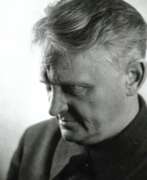

Dmitry Moor, born Dmitry Stakhievich Orlov (Russian: Дмитрий Стахиевич Орлов) was a Russian and Soviet artist of the 19th and 20th centuries. He is known as an illustrator and poster artist whose biography is closely connected with the Bolshevik movement. Moor is considered to be the founder of the Soviet agitational and political poster.
Dmitry Moor began his career as an illustrator-caricaturist, and before the revolution of 1917 he collaborated with Russian periodicals. Moor met the revolution as a graphic artist. He chose the path of an agitator artist, undertaking as one of the first to design propaganda trains. His posters became widely known. His favorite graphic device was a black-and-white ink drawing, emotionally intensified by sharp, usually red accents. His works were imbued with revolutionary romanticism and denounced the enemies of the Soviet state and the remnants of the capitalist system. During the war with Nazi Germany, Moor created posters denouncing the atrocities of the Nazis.
Moor also created posters for cinematographic films and combined creative activities with teaching, working, in particular, at the Moscow Surikov Art Institute.
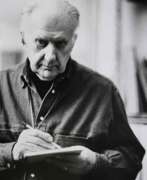

Gabriele Mucchi was an Italian painter, graphic artist and architect. He is considered a co-founder of New Realism.
Gabriele Mucci studied civil engineering and architecture at the University of Bologna. His name became known outside Italy for his impressive frescoes, and his studio became a meeting place for the anti-fascist group Corrente.
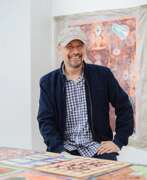

Manuel Ocampo is a Filipino artist. His work fuses sacred Baroque religious iconography with secular political narrative. His works draw upon a wide range of art historical references, contain cartoonish elements, and draw inspiration from punk subculture.
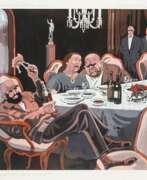

Manfred Oesterle was a German painter, graphic artist, caricaturist and sculptor. In 1948 he was able to achieve professional success in the first satirical post-war magazine "Das Waspennest", founded by Werner Finck and Thaddäus Troll. From 1952 to 1955, Oesterle worked as a caricaturist for “Nebelspalter”, Rorschach/Switzerland. From 1955 to 1967 Oesterle was a permanent employee and member of the editorial board of "Simplicissimus", Munich. With 223 covers, he was the most frequently printed cartoonist of the internationally renowned satirical magazine. For many years, his caricatures, which are outstanding in terms of craftsmanship and intellectual excellence, have also appeared in “Spiegel”, “Zeit”, “Stern”, “Quick”, “Focus”, the “Süddeutsche Zeitung”, the “Augsburger Allgemeine Zeitung”, the “ Südwestpresse” and “Unser Geld”. Oesterle impressed with its immensely broad spectrum. His keen powers of observation and his almost eidetic memory for people and situations shaped Oesterle's paintings and graphics, especially in oil paintings and portraits. Wall and ceiling paintings, glass windows and tapestries were designed and executed by him as well as sculptures, reliefs and mosaics. As a master of the line, he always looked for the characteristic in his motifs. His drawings are pointed and humorous, ironic and critical, but never offending.
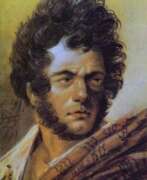

Aleksander Orłowski (Russian: Александр Осипович Орловский), a renowned Polish painter and sketch artist, was born on March 9, 1777, in Warsaw, within the Polish-Lithuanian Commonwealth. His journey into the arts began under challenging circumstances; he was the son of a tavern-keeper and his family was not wealthy. His early promise in art was nurtured by noble patron Izabela Czartoryska, who financed his initial education under the guidance of artist Jan Piotr Norblin.
Orłowski's artistic journey intersected with his military service during the Kościuszko Uprising, a major revolt against Imperial Russia and Prussia in 1794. This period of conflict significantly influenced his later works, which often depicted military scenes and the daily life of soldiers. After the partitions of Poland, Orłowski moved to Saint Petersburg in 1802, where he became a seminal figure in the development of lithography in the Russian Empire.
His oeuvre includes a wide array of subjects, from battle scenes to cultural depictions of everyday life in both Poland and Russia. Notable works such as "Battle Scene" and "Cossack Fighting Off A Tiger" showcase his skill in capturing dynamic movement and drama. His works are preserved in esteemed institutions such as The Russian Museum and The Tretyakov Gallery, highlighting their historical and artistic value.
Orłowski's impact extended beyond the canvas; he was also mentioned in literary works by notable authors like Adam Mickiewicz and Alexander Pushkin, which underscores his cultural significance in the 19th century.
For collectors and experts in art and antiques, Aleksander Orłowski's works represent a crucial segment of Eastern European art history. To stay informed about new discoveries or auction events related to his works, consider subscribing for updates. This subscription ensures you receive timely information tailored to your interests, directly relating to new sales and significant events around Orłowski's art.
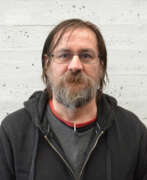

Dan Perjovschi is a Romanian artist, cartoonist and journalist living and working in Bucharest, Romania.
Dan Perjovschi blends drawing, comics and graffiti, commenting on current political, social and cultural issues, sometimes with a touch of black humor. He started working as a press illustrator back in the 1990s and has gained a lot of experience over the years. He plays an active role in the development of civil society in Romania, serving as editor of Revista 22, a cultural magazine, as well as producing his own publication, Gazeta Dana Perjovschi. Perjovschi's works are often printed and used during protests, as they reflect current social and civic issues.
In the last 10 years, in addition to drawing on paper, he has begun to use chalk and marker on the walls of buildings and exhibition spaces, drawing with great freedom even on the floor, walls and windows. In 2009, Dan Perjovschi created his first permanent exhibition at the Czech National Library of Technology in Prague. It consists of 200 monumental drawings on the concrete walls of the main atrium of the building. Dan Perjovschi is the winner of many international awards.
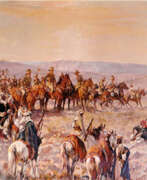

Harold Septimus Power, usually known as H. Septimus Power or H. S. Power, was a New Zealand-born Australian artist, who was an official war artist for Australia in World War I. He exhibited in 1899 with the Melbourne Art Club and soon after moved to Adelaide where he worked as an illustrator and political cartoonist. In 1904, he was commissioned by the trustees of the Art Gallery of South Australia to paint an animal scene. He was a member of the Royal Institute of Oil Painters and the Society of Animal Painters. He also exhibited at the Royal Academy of Arts. After war broke out in the summer of 1914, the Australian government appointed official war artists to depict the activities of the Australian Imperial Force in the European theater of war. Power was appointed in 1917 and was attached to the 1st Division, A.I.F. from September to December of that year and then again in August the following year. Official War Artist during the First World War and was renowned for his depiction of animals, in particular horses, on the field of battle.
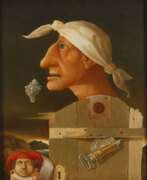

Hans Reiser is a German surrealist artist and caricaturist who lives and works in Reichersboerne.
Hans Reiser studied at the Academy of Fine Arts in Munich and has been drawing weekly cartoons for the Telzer Kurier since 1970. His work has also been published in many newspapers and magazines. Since 1979, the artist has participated in numerous exhibitions at home and abroad.
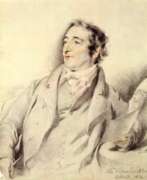

Thomas Rowlandson was an English artist and caricaturist of the Georgian Era, noted for his political satire and social observation. A prolific artist and printmaker, Rowlandson produced both individual social and political satires, as well as a large number of illustrations for novels, humorous books, and topographical works. Like other caricaturists of his age such as James Gillray, his caricatures are often robust or bawdy. Rowlandson also produced highly explicit erotica for a private clientele; this was never published publicly at the time and is now only found in a small number of collections. His caricatures included those of people in power such as the Duchess of Devonshire, William Pitt the Younger and Napoleon Bonaparte.


Günter Schöllkopf was a German draughtsman, graphic artist and painter. He drew his pictorial ideas primarily from the fields of world literature, music, history and politics. When he died at the age of 44, he left behind a body of work of about 1000 works.
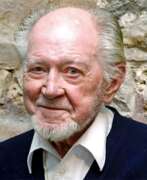

Ronald William Fordham Searle was an English artist and satirical cartoonist, comics artist, sculptor, medal designer and illustrator. He is perhaps best remembered as the creator of St Trinian's School, a fictional all-girls school known for its unruly students and mischievous antics, and for his collaboration with Geoffrey Willans on the Molesworth series. His professional career begins with his documentation of the brutal camp conditions of his period as a prisoner-of-war of the Japanese in World War II in a series of drawings. Most of these drawings appear in his 1986 book, Ronald Searle: To the Kwai and Back, War Drawings 1939–1945. In the book, Searle also wrote of his experiences as a prisoner. At least one of his drawings is on display at the Changi Museum and Chapel, Singapore, but the majority of his originals are in the permanent collection of the Imperial War Museum, London, along with the works of other POW artists. Searle produced an extraordinary volume of work during the 1950s, including drawings for Life, Holiday and Punch.[8] His cartoons appeared in The New Yorker, the Sunday Express and the News Chronicle. After moving to Paris in 1961, he worked more on reportage for Life and Holiday and less on cartoons. He also continued to work in a broad range of media and created books (including his well-known cat books), animated films and sculpture for commemorative medals, both for the French Mint and the British Art Medal Society. Searle did a considerable amount of designing for the cinema.
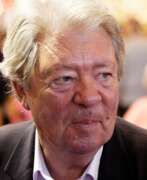

Jean-Jacques Sempé was a French cartoonist. He is known for the series of children's books he created with René Goscinny, Le Petit Nicolas, and also for his poster-like illustrations, usually drawn from a distant or high viewpoint depicting detailed countrysides or cities. For decades, he created covers for The New Yorker.
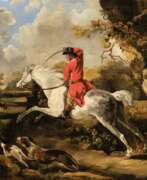

Charles Lorraine Smith or Charles Loraine was a British artist, politician and sportsman.
Lorraine was an avid horseman, an excellent hunter and an amateur painter at the same time. Contemporaries wrote that his paintings were the result of a happy combination of his hunting experience and artistic talent. Indeed, his works depicting hunting scenes and horses were very successful. Lorraine also drew caricatures mocking some of the customs of hunters, such as when they smoke while fox hunting.
Charles Lorraine Smith was a Member of Parliament and High Sheriff of Leicestershire.
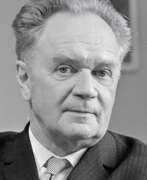

Nikolai Alexandrovich Sokolov (Russian: Николай Александрович Соколов) was a prominent Soviet graphic artist and painter, renowned for his significant contributions to the USSR's art scene. Born in 1903 near Moscow, he became a key member of the KuKriNiksy collective, alongside Mikhail Kupriyanov and Porfiry Krylov, where they produced influential anti-Nazi propaganda and satirical artworks during World War II. These pieces are celebrated for their critical role in wartime artistic expression.
Educated at the esteemed VKHUTEMAS, Sokolov was under the mentorship of leading artists, graduating in 1929. His career was not limited to his solo work; he made substantial contributions to newspapers and magazines through political posters, book illustrations, and caricatures. Sokolov was honored with several prestigious awards, including being named People's Artist of the USSR, receiving the Lenin Prize, and being designated Hero of Socialist Labor, highlighting his contributions to Soviet arts.
Sokolov's diverse body of work, including portraits, landscapes, and still lifes, is featured in significant collections like the State Tretyakov Gallery and the State Russian Museum. His international recognition is underscored by his presence in global institutions such as the Museum of Modern Art (MoMA), demonstrating his far-reaching influence.
For art collectors and experts, Sokolov’s legacy provides a fascinating insight into Soviet artistic practices, blending historical significance with exceptional craftsmanship. His continued relevance in art and auction events offers a direct link to exploring the Soviet art landscape through the work of one of its most impactful figures.
Stay informed about new sales and exhibitions featuring Sokolov’s art by signing up for updates. This subscription is an opportunity to connect with the rich legacy of a Soviet art luminary, ensuring you’re at the forefront of discovering and appreciating Nikolai Alexandrovich Sokolov's enduring artistic contributions.
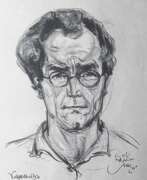

Emil Wilhelm Stumpp was a German painter, teacher, and artist known for his cartoons and drawings of well-known people in the 1930s during the Weimar Republic. He created portraits of many well known people including Bertold Brecht, Chancellor Friedrich Ebert, Thomas Mann. He was eventually commissioned to create a portrait of Adolf Hitler for his birthday in 1933. The work was not well received and the portrait, Stumpp, his paper (the General Anzeiger), and its editor were all prohibited. He left about 6,000 drawings which were all drawn from life.
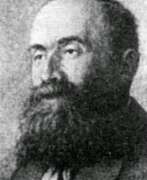

Sergey Ivanovich Svetoslavsky (Russian: Сергей Иванович Светославский) was a Russian Ukrainian and Soviet artist of the late 19th - first third of the 20th centuries. He is known as a painter-landscaper and graphic-caricaturist.
Sergey Svetoslavsky in his works created a lyric-epic image of Ukraine. Most of all he was attracted by the urban landscapes of Kiev and rural landscapes around the city. One of his favorite subjects were views of the Dnieper. The master was a member of the Association of Traveling Art Exhibitions and his city landscapes were done mainly in gray-brown tones, which was typical for the Itinerants.


Wolfgang-Adam Töpffer was a Swiss and French painter, printmaker, caricaturist, and draftsman.
He studied at the Ecole des Beaux-Arts in Paris and painted landscapes and portraits. Later he became interested in plein air landscapes and excelled in this art. Töpffer is also known as a talented draughtsman and political cartoonist. His son Rudolf Töpffer also became a caricaturist.
